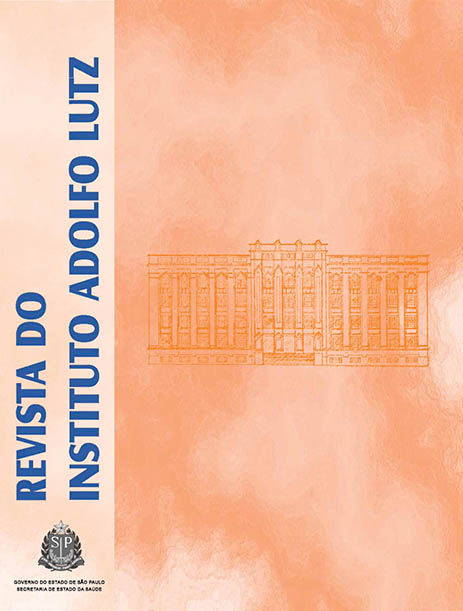Abstract
This investigation analyzed the association between the amounts of phenolic compounds extracted from rice bran and the inhibition of Fusarium graminearum, Aspergillus flavus and Aspergillus oryzae proliferation, and the inhibition of aflatoxin production by the latter microorganism. Phenolic compounds were extracted with methanol, and they were quantified by means of colorimeter assay using Folin-Ciocalteau reagent. The antifungal activity was assessed by means of diluted agar technique. The development of the all of fungi were inhibited up to 2.3% inhibition/μg total phenol in the presence of rice bran phenolic extract, and the production of mycotoxins was inhibited by 100%. These findings suggest that the rice holds a natural defense against those fungal species attack, which might be associated with the occurrence of phenolic acids.References
1. Brul S, Klis FM. Mechanistic and Mathematical Inactivation studies of food spoilage fungi. Fungal Genet Biol. 1999;27:199-208.
2. Melo EA, Guerra NB. Ação antioxidante de compostos fenólicos naturalmente presentes em alimentos. Bol Soc Bras Ciênc Tecnol Alim. 2002;36:1-11.
3. Albayrak S, Aksoy A, Sagdic O, Hamzaoglu E. Compositions, antioxidant and antimicrobial activities of Helichrysum(Asteraceae) species collected from Turkey. Food Chem. 2010;119:114–22.
4. Souza MM, Oliveira MS, Rocha M, Furlong EB. Avaliação da atividade antifúngica de extratos fenólicos de cebola, farelo de arroz e microalga Chlorella phyrenoidosa. Ciênc Tecnol Aliment. 2010;30(3):680-5.
5. Oliveira MS, Badiale-Furlong E. Screening of antifungal and antimycotoxigenic activity of plant phenolic extracts. World Mycotoxin J. 2008;1(2):1-10.
6. Tian S, Nakamura K, Cui T, Kayahara H. High-performance liquid chromatographic determination of phenolic compounds in rice. J Chromatogr A. 2005;1063:121-8.
7. Zhou Z, Robards K, Helliwell S, Blanchard C. The distribution of phenolic acids in rice.Food Chem. 2004;87(3):401-6.
8. Walter M, Marchezan E, Avila LA. Arroz: composição e características nutricionais. Ciênc Rural. 2008;38(4):1184-92.
9. Lemos MRJ, Souza-Soares LA. Arroz e seus produtos e subprodutos na região sul do Brasil.Rev Vetor. 2000;10:21-36.
10. Silva MA, Sanches C, Amante ER. Farelo de arroz – Composição e propriedades. Rev Óleos & Grãos. 2001;34-42.
11. Lemos MRJ, Souza-Soares LA. Farelo de arroz: um subproduto em estudo. Rev Óleos & Grãos. 1999;40-7.
12. Nunes IL, Badiale-Furlong E. Arroz comercializado na região sul do Brasil: aspectos micotoxicológicos e microscópicos. Ciênc Tecnol Aliment. 2003;23(2):190-4.
13. Granada G, Rosa V, Zambiazi R, Koetz P. Caracterização de granolas comerciais. Ciênc Tecnol Aliment. 2003;23(1):87-91.
14. Association of Official Analytical Chemist (AOAC). Official Methods of analysis international, 17º, CD-ROM, Willian Horwitz, 2000.
15. Miller GL. Use of Dinitrosalicylic acid reagent for determination of sugar. Anal Chem. 1959;3(31):326-428.
16. Souza MM, Recart VM, Rocha M, Cipolatti EP, Badiale-Furlong, E. Estudo das condições de extração de compostos fenólicos de cebola (Allium cepa L.). Rev Inst Adolfo Lutz. 2009;68(2):192-200.
17. Badiale-Furlong E, Colla E, Bortolato DS, Baisch AM, Souza-Soares LA. Avaliação do potencial de compostos fenólicos em tecidos vegetais. Rev Vetor. 2003;13:105-14.
18. Nguefack J, Leth V, Amvam Zollo PH, Mathur SB. Evaluation of five essential oils from aromatic plants of Cameroon for controlling food spoilage and mycotoxin producing fungi. Int J Food Microbiol. 2004;94(3):329-34.
19. Garda J, Macedo RM, Badiale-Furlong E. Determinação de tricotecenos em cerveja e avaliação de incidência no produto comercializado no Rio Grande do Sul. Ciênc Tecnol Aliment. 2004;24:657-63.
20. Soares LMV, Rodriguez-Amaya DB. Survey of Aflatoxins, Ochratoxin A, Zearalenone, and Steringmatocystin in some brazilian foods by using multi-toxin-layer chromatographic method. J Assoc Offic Anal Chem. 1989;1(72):22-6.
21. Tanaka T, Yoneda A, Inoue S, Sugiura Y, Ueno Y. Simultaneous determination of trichothecene mycotoxins and zearalenone in cereals by gás chromatography-mass spectrometry. J Chromatogr A. 2000;882:23-8.
22. Tanawaki MH, Silva N. Fungos em alimentos: Ocorrência e detecção. Núcleo de Microbiologia/ITAL; p. 2001.
23. Naves MMV. Características químicas e nutricionais do arroz. Bol CPPA. 2007;25(1):51-60.
24. Juglal S, Govinden R, Odhav B. Spice oils for the control of co-occurring micotoxin-producing fungi.J Food Prot. 2002;65(4): 683-7.
25. Jayashree T, Subramayam C. Oxidative stress as a prerequisite for aflatoxin production by Aspergillus parasiticus. Free Rad Biol Med. 2000;29:981-5.
26. Selvi AT, Joseph GS, Jayaprakasha GK. Inhibition of growth and aflatoxin production in Aspergillus flavus by Garcinia indicaestract and its antioxidant activity. Food Microbiol. 2003;2:455-60.

This work is licensed under a Creative Commons Attribution 4.0 International License.
Copyright (c) 2012 Instituto Adolfo Lutz Journal
